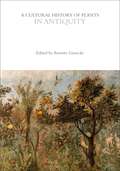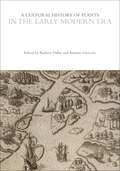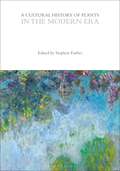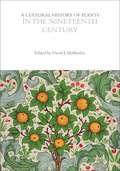- Table View
- List View
Burger (UEB Uncontracted)
This is a picture of a burger seen from the side in the middle of the page. There is a locator dot shown, which will be at the top left of the page when the image is the correct way up. At the top of the picture is half of the burger bun. Going down the page from this is a slice of tomato, burger meat, a lettuce leaf, more burger meat, and lastly the other half of the bun. On the left hand side of the burger, near the bottom is a dollop of tomato ketchup dripping down.
Cacao fruit (Cross-section) (Large Print)
This is a labelled image of a cacao fruit in longitudinal cross section (cut through from top to bottom). This fruit is the source of cocoa beans, from which chocolate products are made. There is a locator dot shown, which will be at the top left of the page when the image is the correct way up. The image of the cacao fruit is in the middle of the page. At its centre is a cavity filled with white pulp and cocoa beans (seeds), which are also white and light brown, and only change to their familiar very dark brown colour after processing. The hard, leathery rind or skin is ridged and is up to three centimetres thick. The fruit is between fifteen and thirty centimetres long.
Cacao fruit (Cross-section) (UEB Contracted)
This is a labelled image of a cacao fruit in longitudinal cross section (cut through from top to bottom). This fruit is the source of cocoa beans, from which chocolate products are made. There is a locator dot shown, which will be at the top left of the page when the image is the correct way up. The image of the cacao fruit is in the middle of the page. At its centre is a cavity filled with white pulp and cocoa beans (seeds), which are also white and light brown, and only change to their familiar very dark brown colour after processing. The hard, leathery rind or skin is ridged and is up to three centimetres thick. The fruit is between fifteen and thirty centimetres long.
Cacao fruit (Cross-section) (UEB Uncontracted)
This is a labelled image of a cacao fruit in longitudinal cross section (cut through from top to bottom). This fruit is the source of cocoa beans, from which chocolate products are made. There is a locator dot shown, which will be at the top left of the page when the image is the correct way up. The image of the cacao fruit is in the middle of the page. At its centre is a cavity filled with white pulp and cocoa beans (seeds), which are also white and light brown, and only change to their familiar very dark brown colour after processing. The hard, leathery rind or skin is ridged and is up to three centimetres thick. The fruit is between fifteen and thirty centimetres long.
Calm Your Mind with Food: A Revolutionary Guide to Controlling Your Anxiety
by Uma NaidooWhen it comes to fighting anxiety, you have more control than you think: the power is at the end of your fork.We're in the middle of a global anxiety epidemic, but in Calm Your Mind With Food, bestselling author and nutritional psychiatrist Dr Uma Naidoo gives you the tools to take back control. Dr Naidoo draws on the latest science to demonstrate how an understanding of how both the brain and gut microbiome works, and a diet that creates a strong foundation for mental health, will equip you to control your anxiety.In this revolutionary, solutions-focussed and full-body approach to relieving anxiety, you'll learn:· Dr Uma's six pillars to calm the mind· How inflammation affects everything from anxiety and depression to Alzheimer's disease· How the trillions of bacteria living in your gut are key to controlling anxiety· How to incorporate anxiety-busting foods into your diet, from the obscure (ashwagandha) to the ubiquitous (vitamin C) · Which foods you should avoid as you make anti-anxiety eating choices· The best diets for managing symptoms of anxiety and depressionWith guidelines for creating your own personal anti-anxiety meal plan and dozens of supernutrient-forward, delicious recipes, Dr Naidoo shows how to effectively use food and nutrition as essential tools for calming the mind. This ground-breaking guide will help you boost your immunity, reduce anxiety and enhance your overall mental well-being.
Cantaloupe Melon (Cross-section) (Large Print)
This is a labelled image of a cantaloupe melon shown in longitudinal cross section (cut through from top to bottom). There is a locator dot shown, which will be at the top left of the page when the image is the correct way up. The image of the cantaloupe melon fills the page. At its centre is a cavity filled with seeds. Surrounding this is the sweet and juicy flesh and thick rind-like skin of the fruit. The cantaloupe is about fifteen to twenty centimetres in length. Its skin is a dull beige grey colour but the flesh inside is a delicate pink orange.
Cantaloupe Melon (Cross-section) (UEB Contracted)
This is a labelled image of a cantaloupe melon shown in longitudinal cross section (cut through from top to bottom). There is a locator dot shown, which will be at the top left of the page when the image is the correct way up. The image of the cantaloupe melon fills the page. At its centre is a cavity filled with seeds. Surrounding this is the sweet and juicy flesh and thick rind-like skin of the fruit. The cantaloupe is about fifteen to twenty centimetres in length. Its skin is a dull beige grey colour but the flesh inside is a delicate pink orange.
Cantaloupe Melon (Cross-section) (UEB Uncontracted)
This is a labelled image of a cantaloupe melon shown in longitudinal cross section (cut through from top to bottom). There is a locator dot shown, which will be at the top left of the page when the image is the correct way up. The image of the cantaloupe melon fills the page. At its centre is a cavity filled with seeds. Surrounding this is the sweet and juicy flesh and thick rind-like skin of the fruit. The cantaloupe is about fifteen to twenty centimetres in length. Its skin is a dull beige grey colour but the flesh inside is a delicate pink orange.
Carrot (Large Print)
This image of a carrot fills the centre of the page. There is a locator dot shown, which will be at the top left of the page when the image is the correct way up. The carrot has a swollen taproot (main root), which is the part of the plant usually eaten, although the green leaves are edible and tasty. The root is sweet and crunchy. The carrots shoots and feathery leaves fill the top part of the page. They join the taproot in the centre of the page. The taproot of the carrot is usually coloured orange but some varieties are white or purple. It is fat at the top and tapers to a point at the bottom of the page. There are fine root hairs attached to the taproot through which the plant draws nutrition from the soil.
Carrot (UEB Contracted)
This image of a carrot fills the centre of the page. There is a locator dot shown, which will be at the top left of the page when the image is the correct way up. The carrot has a swollen taproot (main root), which is the part of the plant usually eaten, although the green leaves are edible and tasty. The root is sweet and crunchy. The carrots shoots and feathery leaves fill the top part of the page. They join the taproot in the centre of the page. The taproot of the carrot is usually coloured orange but some varieties are white or purple. It is fat at the top and tapers to a point at the bottom of the page. There are fine root hairs attached to the taproot through which the plant draws nutrition from the soil.
Carrot (UEB Uncontracted)
This image of a carrot fills the centre of the page. There is a locator dot shown, which will be at the top left of the page when the image is the correct way up. The carrot has a swollen taproot (main root), which is the part of the plant usually eaten, although the green leaves are edible and tasty. The root is sweet and crunchy. The carrots shoots and feathery leaves fill the top part of the page. They join the taproot in the centre of the page. The taproot of the carrot is usually coloured orange but some varieties are white or purple. It is fat at the top and tapers to a point at the bottom of the page. There are fine root hairs attached to the taproot through which the plant draws nutrition from the soil.
Cauliflower (Large Print)
This image of a cauliflower fills the centre of the page. There is a locator dot shown, which will be at the top left of the page when the image is the correct way up. This vegetable is in fact a highly modified flower. It is a member of the Brassicaceae family, which includes cabbage, sprouts, broccoli and kale. The head (or curd) of the cauliflower is at the top of the image; it has a lumpy texture and is a creamy white in colour. Down the page are the thick green leaves with their thick, lighter-coloured veins spreading out from the cauliflower's stalk at the bottom of the image.
Cauliflower (UEB Contracted)
This image of a cauliflower fills the centre of the page. There is a locator dot shown, which will be at the top left of the page when the image is the correct way up. This vegetable is in fact a highly modified flower. It is a member of the Brassicaceae family, which includes cabbage, sprouts, broccoli and kale. The head (or curd) of the cauliflower is at the top of the image; it has a lumpy texture and is a creamy white in colour. Down the page are the thick green leaves with their thick, lighter-coloured veins spreading out from the cauliflower's stalk at the bottom of the image.
Cauliflower (UEB Uncontracted)
This image of a cauliflower fills the centre of the page. There is a locator dot shown, which will be at the top left of the page when the image is the correct way up. This vegetable is in fact a highly modified flower. It is a member of the Brassicaceae family, which includes cabbage, sprouts, broccoli and kale. The head (or curd) of the cauliflower is at the top of the image; it has a lumpy texture and is a creamy white in colour. Down the page are the thick green leaves with their thick, lighter-coloured veins spreading out from the cauliflower's stalk at the bottom of the image.
Cherries (Large Print)
This page shows an image of two cherries joined by their stalks, and a leaf. They are slightly larger than life-size. There is a locator dot shown, which will be at the top left of the page when the image is the correct way up.Just to the right of centre you can find the leaf with its pattern of veins. To the left of this, the two stalks curve down to the fat, sweet red cherries nearer the bottom of the page.
Cherries (UEB Contracted)
This page shows an image of two cherries joined by their stalks, and a leaf. They are slightly larger than life-size. There is a locator dot shown, which will be at the top left of the page when the image is the correct way up.Just to the right of centre you can find the leaf with its pattern of veins. To the left of this, the two stalks curve down to the fat, sweet red cherries nearer the bottom of the page.
Cherries (UEB Uncontracted)
This page shows an image of two cherries joined by their stalks, and a leaf. They are slightly larger than life-size. There is a locator dot shown, which will be at the top left of the page when the image is the correct way up.Just to the right of centre you can find the leaf with its pattern of veins. To the left of this, the two stalks curve down to the fat, sweet red cherries nearer the bottom of the page.
Courgette (Large Print)
This is an image of a green courgette, sometimes known as zucchini, in the middle of the page. There is a locator dot shown, which will be at the top left of the page when the image is the correct way up. The courgette's stalk is in the top left of the page, the main body of the fruit extends down and right to the little bump on the end of the fruit where the flower was once attached. There are lines on the image that represent slight ridges that run the length of the courgette.
Courgette (UEB Contracted)
This is an image of a green courgette, sometimes known as zucchini, in the middle of the page. There is a locator dot shown, which will be at the top left of the page when the image is the correct way up. The courgette's stalk is in the top left of the page, the main body of the fruit extends down and right to the little bump on the end of the fruit where the flower was once attached. There are lines on the image that represent slight ridges that run the length of the courgette.
Courgette (UEB Uncontracted)
This is an image of a green courgette, sometimes known as zucchini, in the middle of the page. There is a locator dot shown, which will be at the top left of the page when the image is the correct way up. The courgette's stalk is in the top left of the page, the main body of the fruit extends down and right to the little bump on the end of the fruit where the flower was once attached. There are lines on the image that represent slight ridges that run the length of the courgette.
A Cultural History of Plants in Antiquity (The Cultural Histories Series)
A Cultural History of Plants in Antiquity covers the period from 10,000 BCE to 500 CE. This period witnessed the transition from hunter-gatherer subsistence to the practice of agriculture in Mesopotamia and elsewhere, and culminated in the fall of the Roman Empire, the end of the Han Dynasty in China, the rise of Byzantium, and the first flowering of Mayan civilization. Human uses for and understanding of plants drove cultural evolution and were inextricably bound to all aspects of cultural practice. The growth of botanical knowledge was fundamental to the development of agriculture, technology, medicine, and science, as well as to the birth of cities, the rise of religions and mythologies, and the creation of works of literature and art. The 6 volume set of the Cultural History of Plants presents the first comprehensive history of the uses and meanings of plants from prehistory to today. The themes covered in each volume are plants as staple foods; plants as luxury foods; trade and exploration; plant technology and science; plants and medicine; plants in culture; plants as natural ornaments; the representation of plants. Annette Giesecke is Professor of Classics at the University of Delaware, USA. Volume 1 in the Cultural History of Plants set.General Editors: Annette Giesecke, University of Delaware, USA, and David Mabberley, University of Oxford, UK.
A Cultural History of Plants in the Early Modern Era (The Cultural Histories Series)
A Cultural History of Plants in the Early Modern Era covers the period from 1400 to 1650, a time of discovery and rediscovery, of experiment and innovation. Renaissance learning brought ancient knowledge to modern European consciousness whilst exploration placed all the continents in contact with one another. The dissemination of knowledge was further speeded by the spread of printing. New staples and spices, new botanical medicines, and new garden plants all catalysed agriculture, trade, and science. The great medical botanists of the period attempted no less than what Marlowe's Dr Faustus demanded - a book “wherein I might see all plants, herbs, and trees that grow upon the earth.” Human impact on plants and our botanical knowledge had irrevocably changed. The 6 volume set of the Cultural History of Plants presents the first comprehensive history of the uses and meanings of plants from prehistory to today. The themes covered in each volume are plants as staple foods; plants as luxury foods; trade and exploration; plant technology and science; plants and medicine; plants in culture; plants as natural ornaments; the representation of plants. Andrew Dalby is an independent scholar and writer, based in France. Annette Giesecke is Professor of Classics at the University of Delaware, USA. Volume 3 in the Cultural History of Plants set.General Editors: Annette Giesecke, University of Delaware, USA, and David Mabberley, University of Oxford, UK.
A Cultural History of Plants in the Modern Era (The Cultural Histories Series)
A Cultural History of Plants in the Modern Era covers the period from 1920 to today - a time when population growth, industrialization, global trade, and consumerism have fundamentally reshaped our relationship with plants. Advances in agriculture, science, and technology have revolutionised the ways we feed ourselves, whilst urbanization and industrial processing have reduced our direct connection with living plants. At the same time, our understanding of both ecology and conservation have greatly increased and our appreciation of the meanings and aesthetics of plants continue to suffuse art and everyday culture. The modern era has witnessed a revolution in both the valuation and the destruction of the natural world - more than ever before, we understand that the vitality of our relationship with plants will shape our future. The 6 volume set of the Cultural History of Plants presents the first comprehensive history of the uses and meanings of plants from prehistory to today. The themes covered in each volume are plants as staple foods; plants as luxury foods; trade and exploration; plant technology and science; plants and medicine; plants in culture; plants as natural ornaments; the representation of plants.Stephen Forbes is an independent scholar and writer, based in Australia. Volume 6 in the Cultural History of Plants set.General Editors: Annette Giesecke, University of Delaware, USA, and David Mabberley, University of Oxford, UK.
A Cultural History of Plants in the Nineteenth Century (The Cultural Histories Series)
A Cultural History of Plants in the Nineteenth Century covers the period from 1800 to 1920, a time of astonishing growth in industrialization, urbanization, migration, population growth, colonial possessions, and developments in scientific knowledge. As European modes of civilization and cultivation were exported worldwide, botanical study was revolutionized – through the work of Charles Darwin and many others – and the new science of biology was born, based on cells, nuclei and molecules. As Darwinism took hold, plants came to be seen as a way of thinking about the connectivity of nature and life itself. The 6 volume set of the Cultural History of Plants presents the first comprehensive history of the uses and meanings of plants from prehistory to today. The themes covered in each volume are plants as staple foods; plants as luxury foods; trade and exploration; plant technology and science; plants and medicine; plants in culture; plants as natural ornaments; the representation of plants. David Mabberley is Emeritus Fellow at Wadham College, University of Oxford, UK; Emeritus Professor at the University of Leiden, The Netherlands; and Adjunct Professor at Macquarie University, Australia. Volume 5 in the Cultural History of Plants set.General Editors: Annette Giesecke, University of Delaware, USA, and David Mabberley, University of Oxford, UK.





